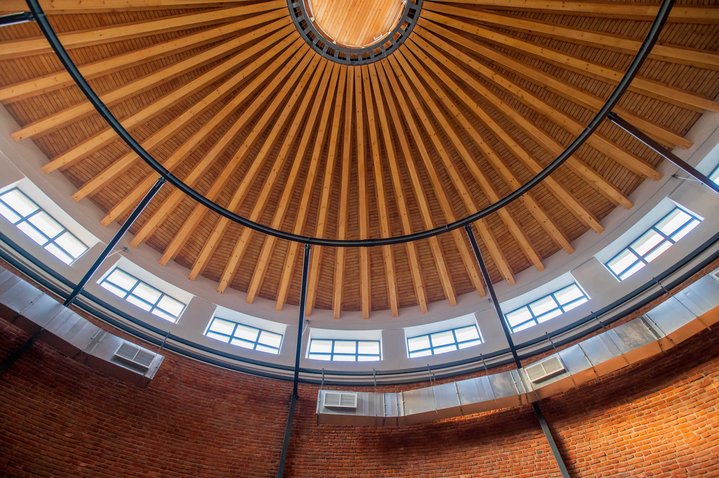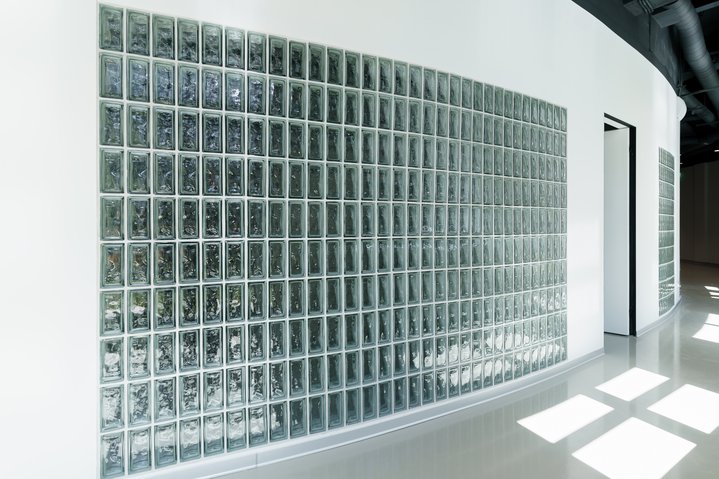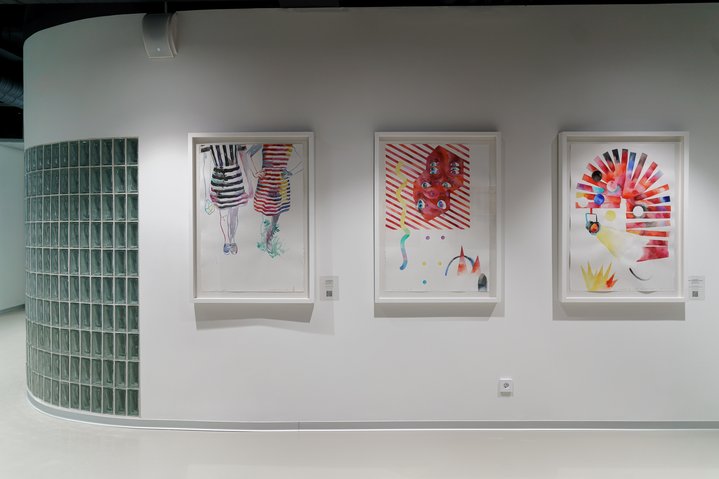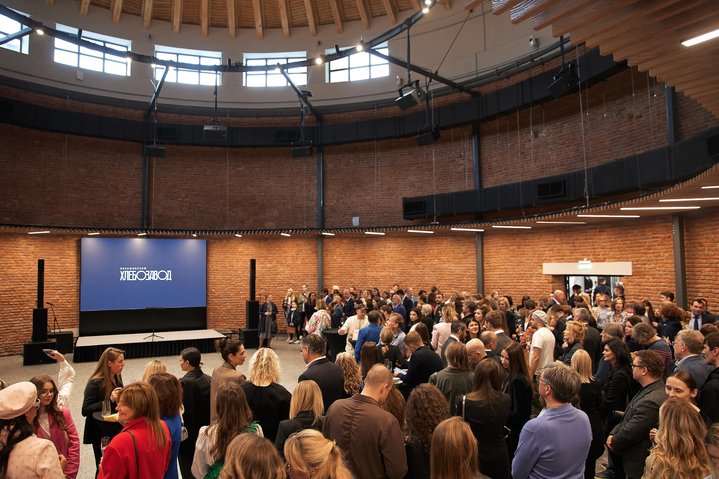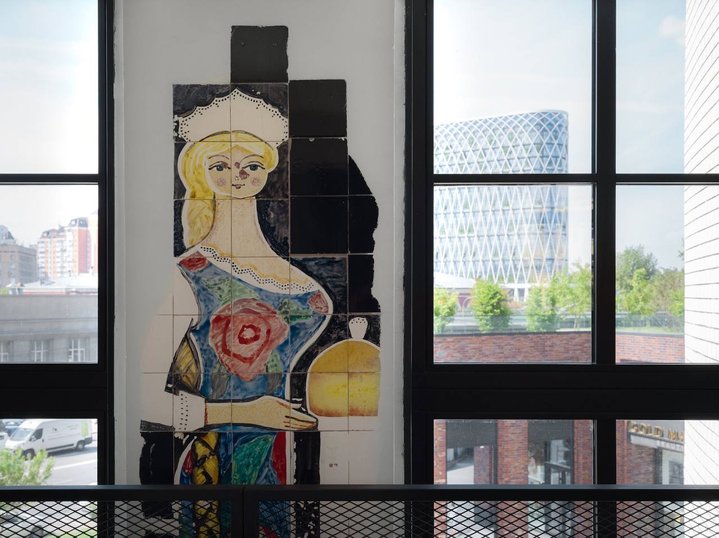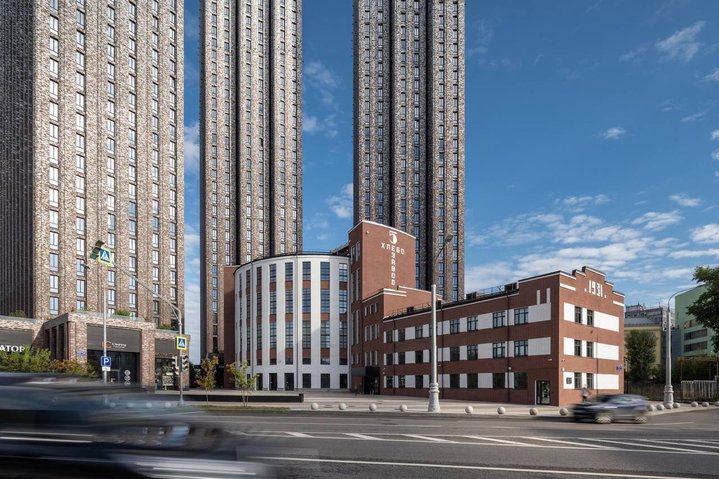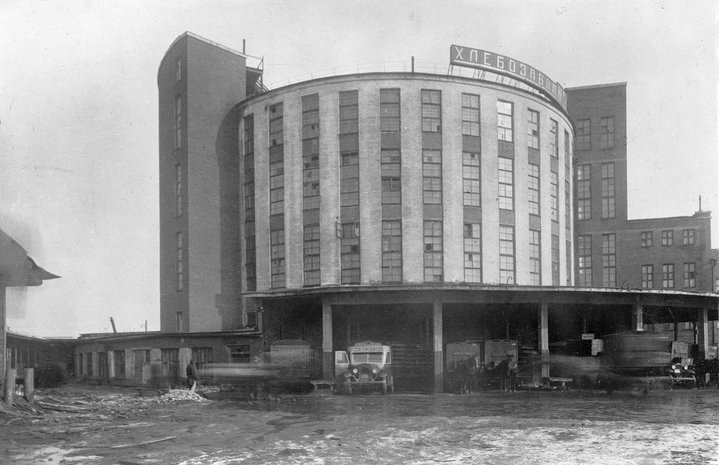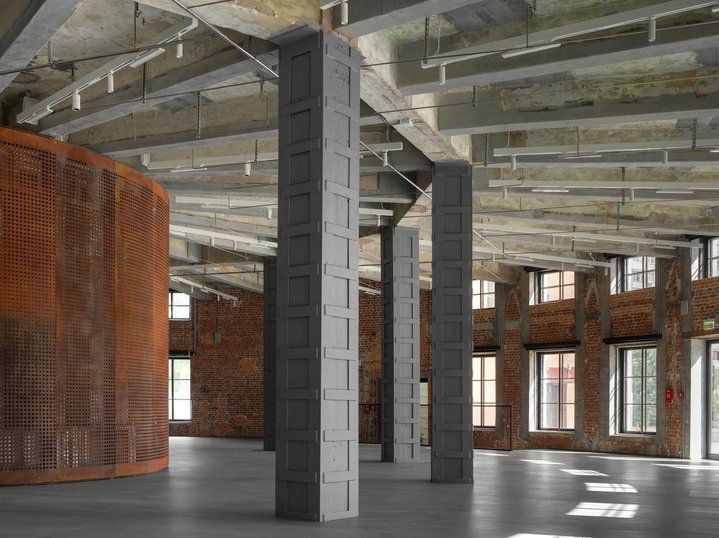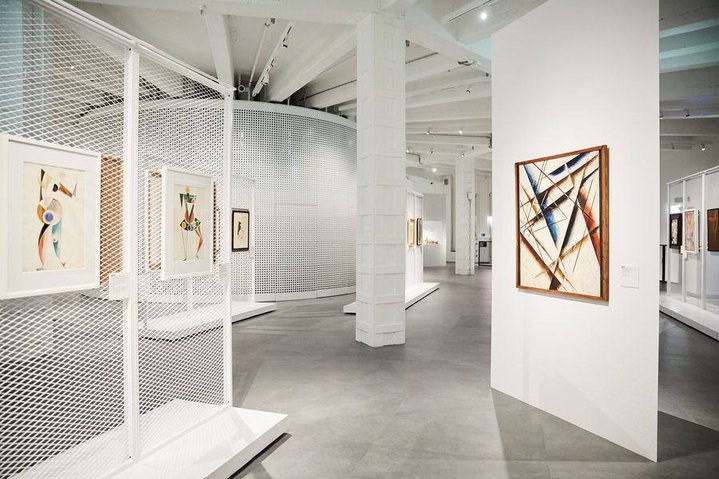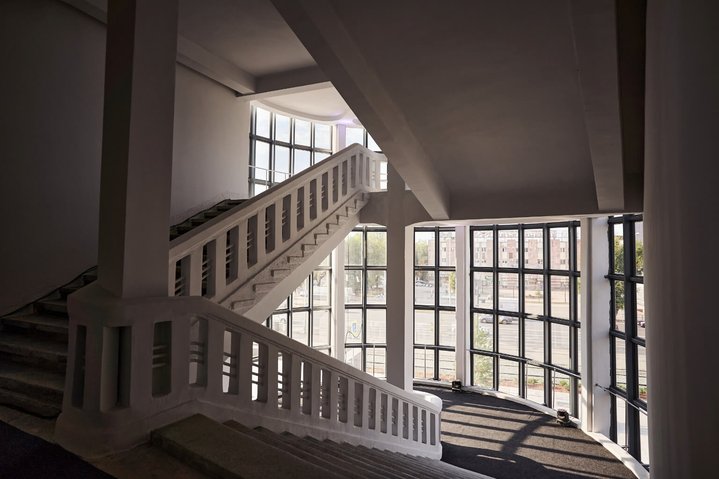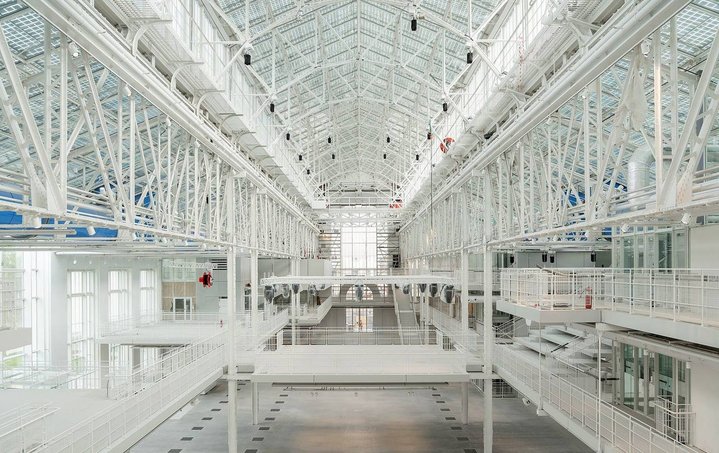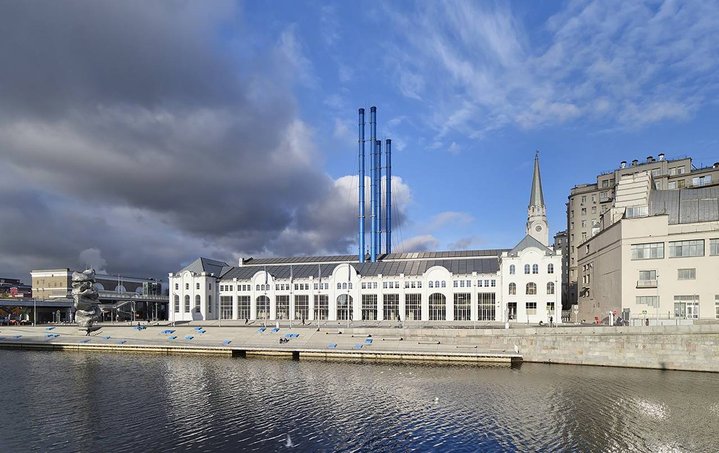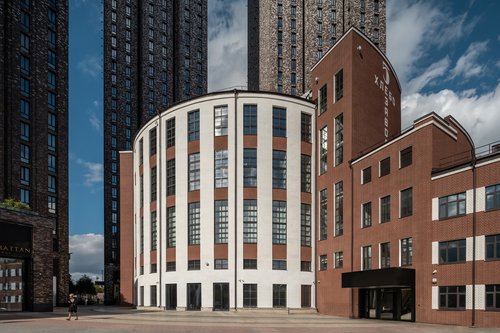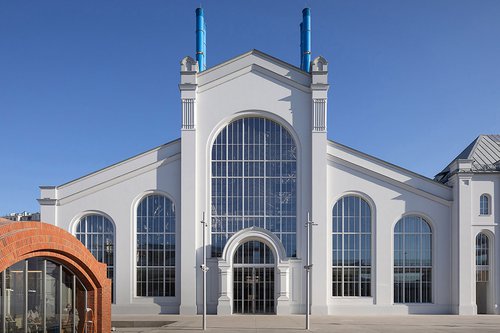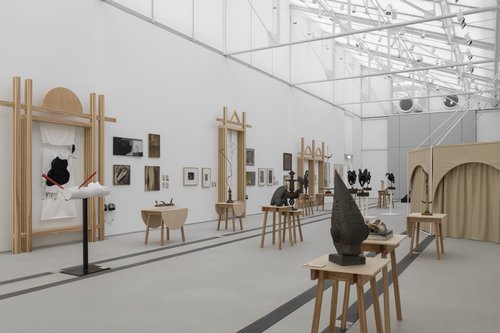Architects Struggle with History while Transforming Russian Factories into Cultural Venues

Levashovsky Bakery Factory. Saint Petersburg, 2023. Courtesy of Levashovsky Bakery Factory
The Levashovsky Bakery Factory in St.Petersburg has been turned into a cultural centre, joining a cohort of similar projects completed over the last few years. According to art critic Sergey Guskov, the choices made by architects during those reconstructions can tell us a lot about Russia’s cultural and social climate today.
The Levashovsky Bakery Factory has recently opened in St. Petersburg after almost five years of reconstruction. The building is well known to locals - it is a monument of constructivist architecture and one of a seven automated bread-baking plants build in the Soviet Union but more than this it is associated with the history of the Siege of Leningrad from 1941 to 1944. Here bread was baked for the starving city. As part of its reconstruction, all outbuildings created later and dating from the 1960s till the 2000s were demolished and the building was returned to the original appearance it had in the 1930s and 40s.
Such 'cleansing' of Stalinist architecture has become a trend over recent decades. A similar approach was taken in Moscow, when the historical pavilions of the VDNKh (Exhibition of Achievements of National Economy, founded in 1930s) were stripped of the layers which had been added during the Brezhnev-era and the 1990s. However, if the political subtext of an alleged return to the Stalinist ‘greatness’ and a rejection of the legacy of Brezhnev’s stagnancy period and the ‘wild 1990s’ is obvious in the case of the VDNKh, everything is more complicated with the Levashovsky bakery. On the one hand, unlike VDNKh, it is not at all a pompous late-Stalinist Empire building and there are no imperial motifs in the bakery’s architecture. The theme of the Siege is delicately woven into its fabric without any additional pathos. Insidethere is a hidden interactive installation created by a prominent Petersburg historian, Lev Lurie. Resembling a stairwell,you ring the bell, enter the flat, and experience the history of those tragic years. On the other hand, the development company RBI, who bought the factory in 2016, not only managed this reconstruction but also that of several other buildings in the vicinity. So this architectural monument, nestled in the middle of small squares that have emerged after the demolition of later architectural additions and fences, planted with trees and shrubs, is seen by the current owners as a kind of an unobtrusive advertisement or business card.
The Levashovsky Bakery houses a library, offices and co-working space, as well as a private art education venue called the Masters School whose founder, Polina Bondareva, has become a programme director of the whole project. She is responsible for the cultural content on the site. There are not many spaces here conceived exclusively for exhibitions; they are located on the ground floor on the outer edges of the building. Some of the rooms are occupied by the Masters School itself. The central hall, under a huge dome, is designed for performative and educational events and is a good place for lectures and concerts. During the grand opening of the Levashovsky Bakery, the premiere of a sound installation by composers Vladimir Rannev and Dmitry Renansky was held there, something in between a concert and a performance. Challenging spaces do not discourage Bondareva. It has recently been announced that the Ruarts Foundation in Moscowwill show an exhibition by photographer Mikhail Rozanov (b. 1973) at the Levashovsky Bakery. And colleagues from another recently opened reconstruction bakery, the Zotov Centre in Moscow, will help to organise a film programme.
Last year there was a lot of criticism of the Zotov Centre mainly relating to issues of inclusion, such as the revolving door at the entrance, an uncomfortable lift and the cloakroom being located on the floor above the entrance level. These discussions served as a distraction from around the historical layering conceived by architect Sergey Choban who did not return this 1931 building to its original state but instead preserved details from several different periods, such as a mosaic with a female bakery worker from the 1970s. Choban has also been bold in introducing contemporary elements, such asblackout curtains on the ground floor or technical infrastructure which is on view in many places. It echoes Zotov’s immediate surroundings, where three residential skyscrapers adjoin and now form a coherent architectural ensemble. If in recent reconstructions such as that of the VDNKh you see a nostalgia for the early Soviet times, with the Zotov there is more a nascent yearning for the fat 2000s, when the first oligarch mega buildings were founded on former industrial sites, and for the 1990s, when architecture was liberated and eclectic, sometimes just downright wild.
In general, there is an interesting relationship between history and the construction of museums and art centres in recent years. The building becomes a gesture, however, not at all in the same way as in the 'star architecture' of the likes of Zaha Hadid, where striking external forms dominate all other concerns. The gesture in contemporary Russian architecture has more to do with a demonstration of historical preferences or reference points. After all, it makes a big difference what you reference: the era of hope of the 1920s and early 1930s, the gloomy seven-year period from the end of World War II until Stalin’s death, Soviet Modernism of the 1960s and 1970s, or the post-Soviet decades? It is also interesting to see which periods are blotted out of a building's history. The owners of the Levashovsky Bakery wanted to remove traces of the 1990s and 2000s, which are associated in St. Petersburg with ruin, lack of order, and a crime epidemic. The reconstruction of GES-2 in Moscow shows a different perspective on history. It is as if the building is making a leap from pre-revolutionary times into a bright future that has not yet arrived (and it is not clear that it will ever do so). This makes the space seem utopian and, for some critics, even irrelevant.
Another important point arises from what is a rather wishful gesture. It seems that the exhibition functionality in these cultural centres is far from the primary interest. In the Levashovsky Bakery, it is not particularly convenient to stage exhibitions. In GES-2, the central area of the nave is startlingly empty: as curators of the institution explain, there is a permanent sculpture formed of the visitors, a perception which does not satisfy everyone. In Samara, where a branch of the State Tretyakov Gallery is being created from a constructivist factory-kitchen, there is a similar problem: lots of windows and few surfaces to use for display. But this building dating from 1932 is distinctive: it takes the form of a hammer and sickle, referring to the great construction sites of industrialization. It must be said that the presence of the Tretyakov itself is not very appropriate in this context, as the recent twists and turns in cultural policy in Russia have placed the institution now almost exclusively on the path of preservation, rather than the creation of the new, so the pathos of the Constructivist building will be in opposition to its exhibition content. The Samara branch is still far from completion. Maybe by the time the museum building is opened everything will change dramatically again.
Levashovsky Bakery Factory
Zotov centre
VDNKh
GES-2 House of Culture
State Tretyakov Gallery’s Samara branch






